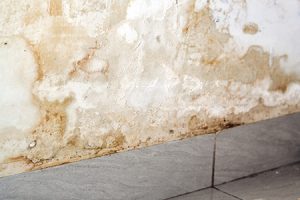Exactly How to Prevent Water Damage in Your Bathroom
Exactly How to Prevent Water Damage in Your Bathroom
Blog Article
Every person is bound to have his or her own theory when it comes to How to Repair and Prevent Bathroom Water Damage.

The restroom is extremely at risk for damp accumulation and possible water damage due to the constant use of water in it. This article supplies basic evaluation techniques to aid discovering water damages dangers.
The constant use water in the shower room makes it exceptionally prone for wet buildup and prospective water damage. By inspecting it consistently, you can decrease water related problems.
The following collection of evaluations is very easy to carry out and also must be done once in every three months in order to maintain your bathroom healthy and to avoid potential water problems caused by the tub, the shower, pipe joints as well as plumbing, sinks, cabinets, as well as the commode
Do not disregard executing these evaluations and also be extensive while executing them. Remember that these easy assessments can save you a lot of cash by offering very early indicators for water damages
Sinks and Cabinets
Sinks as well as closets are exposed to wetness and humidity day-to-day and are typically forgotten. Inspect frequently under the sink and also on the countertop over it. Fix any drip in the trap as it might recommend drain issues. Check out the sink, slow-moving draining pipes may suggest an obstructed drain. Replace sink seals if they are split or loosened.
Bath tub and Shower
The shower as well as tub call for special attention as well as upkeep. Examine the tiles and replace if split. See to it that there is no missing grout between the ceramic tiles. Check and also change cracked caulking at joints where the walls meet the floor or the tub. Blocked drains pipes and also pipelines troubles will certainly prevent the bathtub from drying as well as may indicate serious problems below the tub. Talk to an expert promptly to avoid architectural damages. Focus on stainings or soft locations around the tub wall surfaces as they might suggest an interior leakage.
Plumbing
Signs for water damages are difficult to find considering that a lot of pipelines are set up inside the wall surfaces.
Pay special interest to flooring and walls moisture and discolorations as they might show an unseen plumbing trouble. Examine wetness levels in adjoining rooms as well.
The Toilet
The commode is an at risk water joint. Inspect the water lines as well as search for leaks around the toilet seat, in the hose, and under the water container. If you identify any kind of indications of wetness on the floor around the commode, look for leakages in the toilet rim and container seals.
Know that hanging bathroom bowl antiperspirants raises the possibilities for blockages.
10 TIPS TO PREVENT WATER DAMAGE IN THE BATHROOM
The average household uses approximately 80-100 gallons of water per person per day. For a family of 4, that's almost 2,500 gallons of water a week! The largest portion of this consumption comes from bathroom use. Flushing the toilet uses the most water, followed by taking a shower or bath. With that much water running through the home, water damage in the bathroom is bound to happen. Knowing how to spot signs of a water leak is essential to preventing long-term damage. This guide provides you with tips to reduce the impact of water damage on your bathroom.
CAUSES OF BATHROOM WATER DAMAGE
Pipe breaks are the most common cause of water damage we see in our daily jobs. The age of a pipe plays a large role in a pipe break as well as corrosion. Over time, the metal begins to break down, allowing water to escape. Frozen pipe breaks are also a concern in the winter months. Toilet overflows caused by paper products or children flushing inappropriate items. Degraded caulking around the toilet or bathtub can allow water seepage, sometimes behind the fixture, into the subfloor or walls. Condensation forms when the water in a pipe is cooler than the air temperature. Beads of water form on the exterior of the pipes, sometimes so much so that the water begins to drip and pool below. Sink or shower backups created by poor drainage. HOW TO PREVENT WATER DAMAGE IN YOUR BATHROOM
Inspect your toilet supply line for worn or frayed hoses and replace them as needed. Winterize your plumbing to prevent a frozen pipe break. Use vent fans to prevent condensation that can lead to mold growth. Routinely check and replace degraded caulking around your toilet or bathtub. Increase the temperature in your toilet tank and insulate your pipes during the warm summer months to keep condensation from forming. Use child safety locks on the toilets. Flush only toilet paper. "Flushable" wet wipes are actually not good for your plumbing system. Additionally, feminine hygiene products should not be flushed. Prevent water from escaping the tub or shower. Make sure shower curtains are in good condition. Inspect shower doors and replace the seal strip if necessary. Wipe up any water that accumulates on the floor and use bath mats. Water left to sit can cause damage to the tiles and flooring. Refrain from using bath products containing heavy oils to avoid a clogged drain.

Do you enjoy reading up on How to Repair and Prevent Bathroom Water Damage? Make a review directly below. We'd be interested to hear your insights about this write-up. We are looking forward that you come back again in the near future. Sharing is nice. Helping others is fun. I cherish reading our article about Common Causes of Water Damage in a Bathroom.
Click Here! Report this page